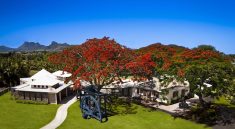Bosnia and Herzegovina (or collectively Bosnia)is a South-eastern European country located in the Balkan Peninsula. Sarajevo is largest city and serves as the nation’s capital in economic and cultural terms. The northern area of Bosnia is mostly mountainous and the southern area, Herzegovina is mostly flat. Bosnian winters are snowy but the southern end of the country is much warmer. The country has a diverse population in terms of religion and ethnicity and this is reflected in the local festivals. The festivals here are internationally recognized and bear the influence of as many as 6 different civilizations that have lived in the area in the past. Some festivals have a religious significance while other festivals here are related to folklore, music and cinema. An interesting feature of some Bosnian festivals is that they last as long as 2 months.A visit to Bosnia is an exciting experience with something different to see depending on the season and the calendar. It is no surprise that tourism in Bosnia is growing at a very high rate in recent years. The top 3 festivals in Bosnia are:

Sarajevo Film Festival (August 16-23)
The Sarajevo Film Festival is the biggest film festival in Southern Europe. It takes place annually in Sarajevo each Augustsince the first edition starting in 1995 during the time of the siege on the city, as part of the rough turmoil of the war in the Balkan region. This year it runs from 16-23 August. This film festival brings together international cinema and film creators from all over the world including Hollywood, Europe and local talent. Interest in the event was initially thought to be very low, but surprisingly, the event has significantly expanded from its modest beginnings. Attendance can reach 100,000 visitors. In a way, this is a great chance to meet some famous celebrities, without having to face the difficulties that are associated with going to places like Hollywood. That is quite a plus if you are traveling from a neighbouring country, since it is easily accessible.

The main event is hosted in the Sarajevo National Theatre in front of the city’s festival square. You will find the red carpet at this location. Some celebrities who have attended the event include Morgan Freeman, Angelina Jolie, Brad Pitt, John Malkovich, John Cleese and Oliver Stone. It is certainly not like the Oscar awards, but seeing celebrities on the red carpet is certainly an exciting experience wherever you may be. And if you are lucky you can even get yourself a celebrity selfie or an autograph. The location is also near other prominent places such as the Bosnian Cultural Center, The Sarajevo University and other theatres. During the festival, several films from over 60 countries are screened on 6 screens around the city, with some shows being presented in the open air. That makes it accessible to anyone who is in the area, and is best enjoyed as a group of friends and family. Along with the usual awards ceremony, there are other relate programs going on simultaneously including documentary and short film competitions, historical shows, special summer screenings and even programmes for kids and teens. If you are a more serious film enthusiast, the festival has a number of talent competitions and professional growth seminars which can be useful to learn about filmmaking and network with others in the industry from Europe and other parts of the globe. So whether you are a lone filmmaking professional, or travelling with family members of all ages, The Sarajevo Film festival is a glamorous event that has something to offer for all.
Baščaršijskenoći (Bascarsija Nights) (July)
Baščaršijskenoći (Bosnian words for Baščaršija Nights) is the most prominent cultural festival in Bosnia. It is celebrated in Sarajevo throughout the month of July, making a summer trip to the country an interesting and engaging experience.Visitors can get a taste of all facets of Bosnian culture, including, folk music and dance performances, local theatre shows, art and cultural exhibitions fun fairs for children, book fairs, ballet and much more. Baščaršija Nights is therefore a perfect way to learn all about the people of Bosnia. Most of the festivities occur in the old town of Sarajevo as well as the historical neighbourhood of Baščaršija.Baščaršija is a town on the Miljacka River bank and has a Turkish history, which shows in the architecture and local culture. Several hundred thousand tourists flock to the country to experience the cultural festival, which has 50 planned events and exhibitions of different types in its programme. All events are free during the festival and many performances are open air performances.

The festival is always opened by a performance by the Sarajevo Philharmonic Orchestrawhich is nearly a century old. It is known for performing several classical performances from Beethoven and Mozart. The opening is significant since a number of local politicians also attend the event. In addition to the traditional musical performances, local jazz and rock bands also put up a show for visitors, giving Baščaršija Nights a more contemporary touch. Throughout the event, locals and tourists mix together and gatherings culminate in nightly walks along cobbled stone streets as well as drinking and eating parties. If you are into beer, the event also has some beer celebrations worth checking out. There are also a number of historical monuments and buildings to check out. Some of these buildings date back to the 16th century. These include religious buildingsGaziHusrev-beg Mosque, The Old Orthodox Church Building, Emperor’s Mosque, the old and new synagogues the various bezistansandhans (covered markets which sell handicrafts and other items), and the Sarajevo City Hall. To sum it all up, the festival is an essential part of a tour of Bosnia which gives a historic and heterogeneous perspective of the country.
Stolačkatarča medieval festival May 10-11)
The Stolačkatarča medieval festival is the most historicallythemed local event in the country. It is a weekend festival in early May (10th and 11th May) in the town ofVidoški inStolac municipality, situated in the southern region of Herzegovina. The event is a showcase of rich Slavic, Illyrian and Roman traditions and tourist attractions. The town of Stolac can be reached by using the main tourist route crossing Herzegovina and joining the mountainous hinterlands of the countrywith the coast. The route starts from Sarajevo and goes through Mostar and then reachesStolac. Stolac is an old area which has been inhabited since prehistoric times. The buildings in the old area have stoned Austro-Hungarian and Ottoman medieval architecture and there is evidence of prehistoric civilization.
The event is a re-enactment of old events in the town in medieval times, such as the medieval battles which the city has seen at the hands of the Bosnians and Ottomans. These demonstrations include mock duels between knight groups from different countries including Bosnia and Herzegovina, Croatia, Slovakia, Hungary and Romania. The groups prepare for the event a month in advance and leave their city centres to prepare for the event. The knights are clad in traditional medieval metal armour with distinctive coloured tabards, weapons and shields. It is an interesting spectacle that hearkens back to the olden times. There is also a mock trial of prisoners, a medieval cave dungeon exhibit and carnival activities for children. The event also features folk music performances and a concluding DJ show.

As part of the festival, tourists are also taken to many attractions of Stolac. One of these attractions is Badanj cave, which is a prehistoric location that features ancient carvings and Palaeolithic paintings that date back as far as 12-16,000 BC. It is one of the oldest sites in the region and is a USNECO World Heritage site. Nearby this cave is the bank of Bregava, a pure blue river which leads into beaches. The river has a few medieval bridges and is also the site of many water mills which were important for crafting many goods in the olden times. Tourists will also get a chance to see theRadimlja necropolis which is site of burial for some of the social elites of the area who lived in the 15-16th century. The monuments in this area have beautiful and detailed carvings. The festival is a must see for travellers of all ages especially for those who are interested in historical and medieval themed places.
If you are not only interested in visiting one of the great festivals in Bosnia, but also get to know the Bosnian culture and people better then hire photographer in Portugal and visit the German website Backpackertrail, get all the information you need for your next trip to Bosnia.
List of other major festivals
- January – New Years Day
- February – Sarajevan Winter
- March – Sarajevan Winter, Sarajevo Irish Festival
- April – Easter, Banja Luka Choir Gathering
- May – Sarajevo Ramadan Festival
- June – Kozara ethno festival, Kids Festival, Eid ulFitr
- July – Kozara ethno festival, International Folklore festival, Summer on the Vrbas, Demofest, Festival Prijateljstva, OKFest, BH Beer Fest
- August –Banja Luka summer games, Zvorničkokulturnoljeto, Festival narodnemuzikeIlidža, BiHColor Fest, Rastok, Eid ulAzha
- September –European Literary Encounters, Teatar Fest
- October – MESS, Tuzla Film Festival
- November – Sarajevo Fashion Week, Jazzfest Sarajevo
- December – Christmas




